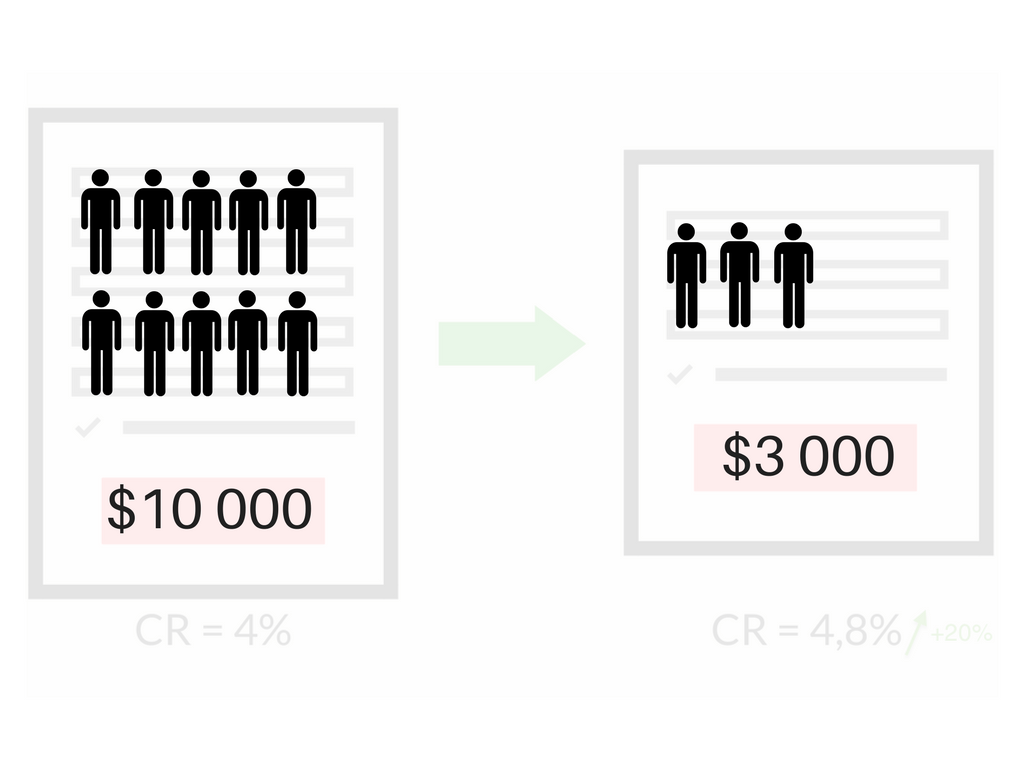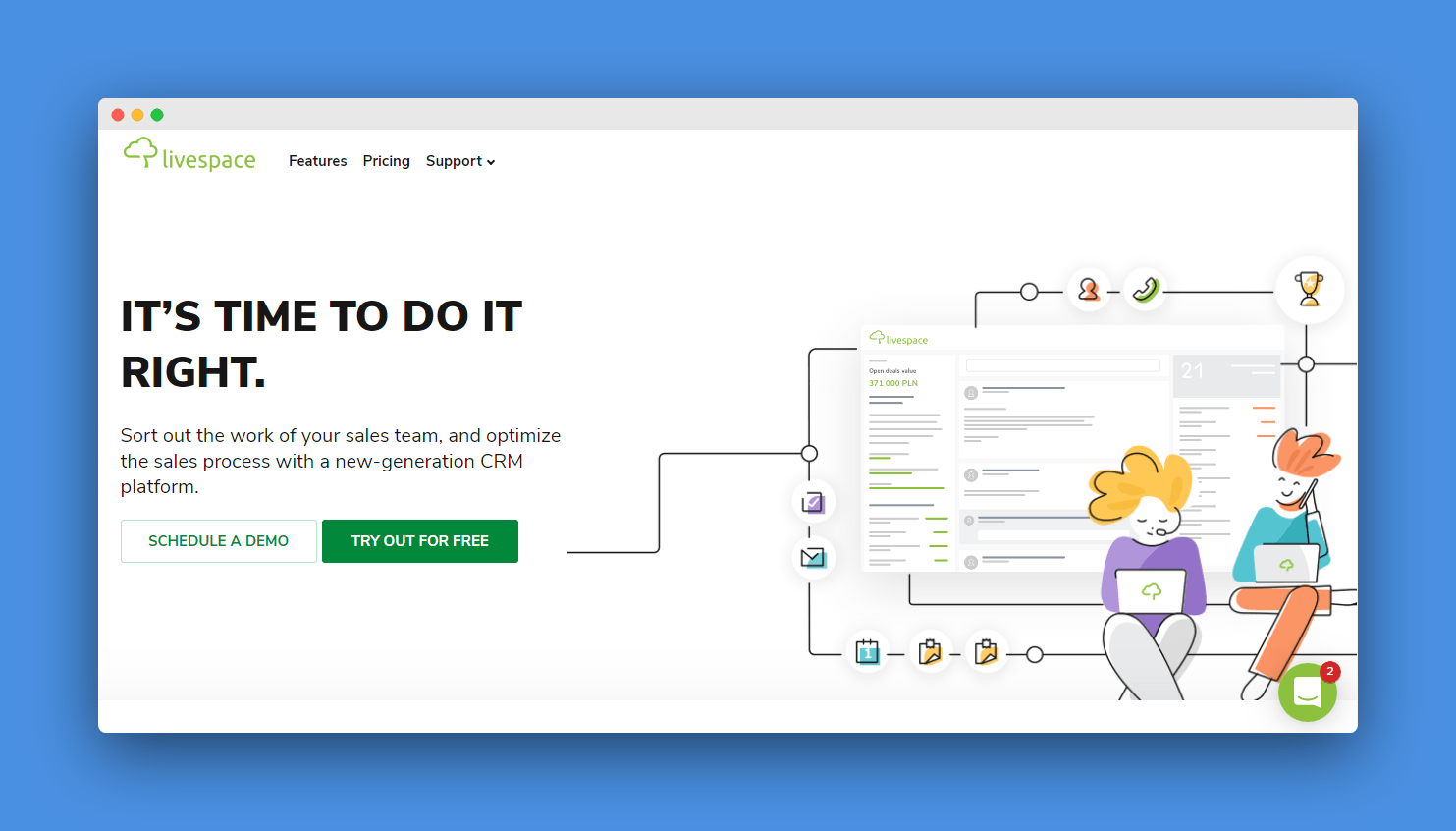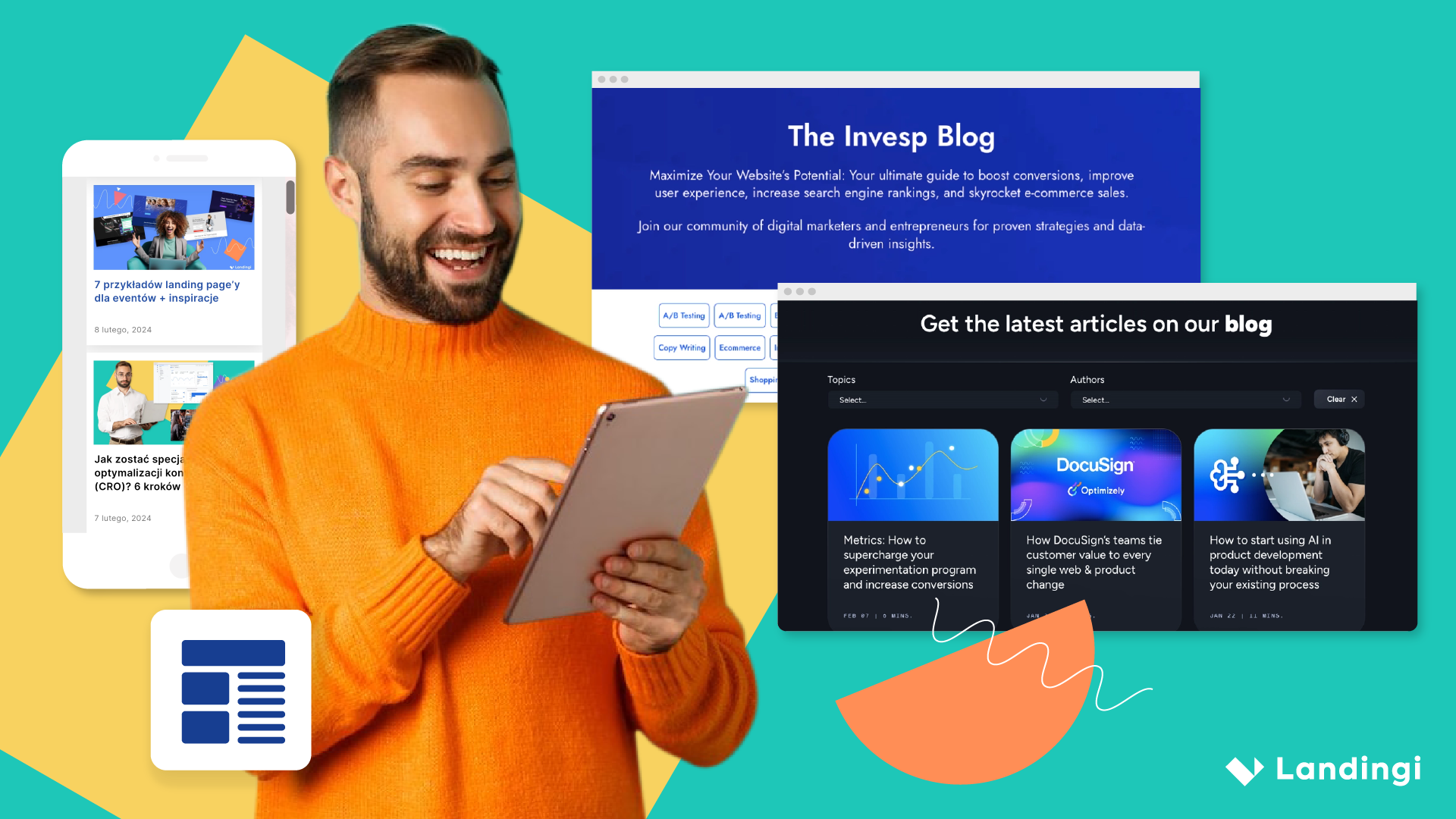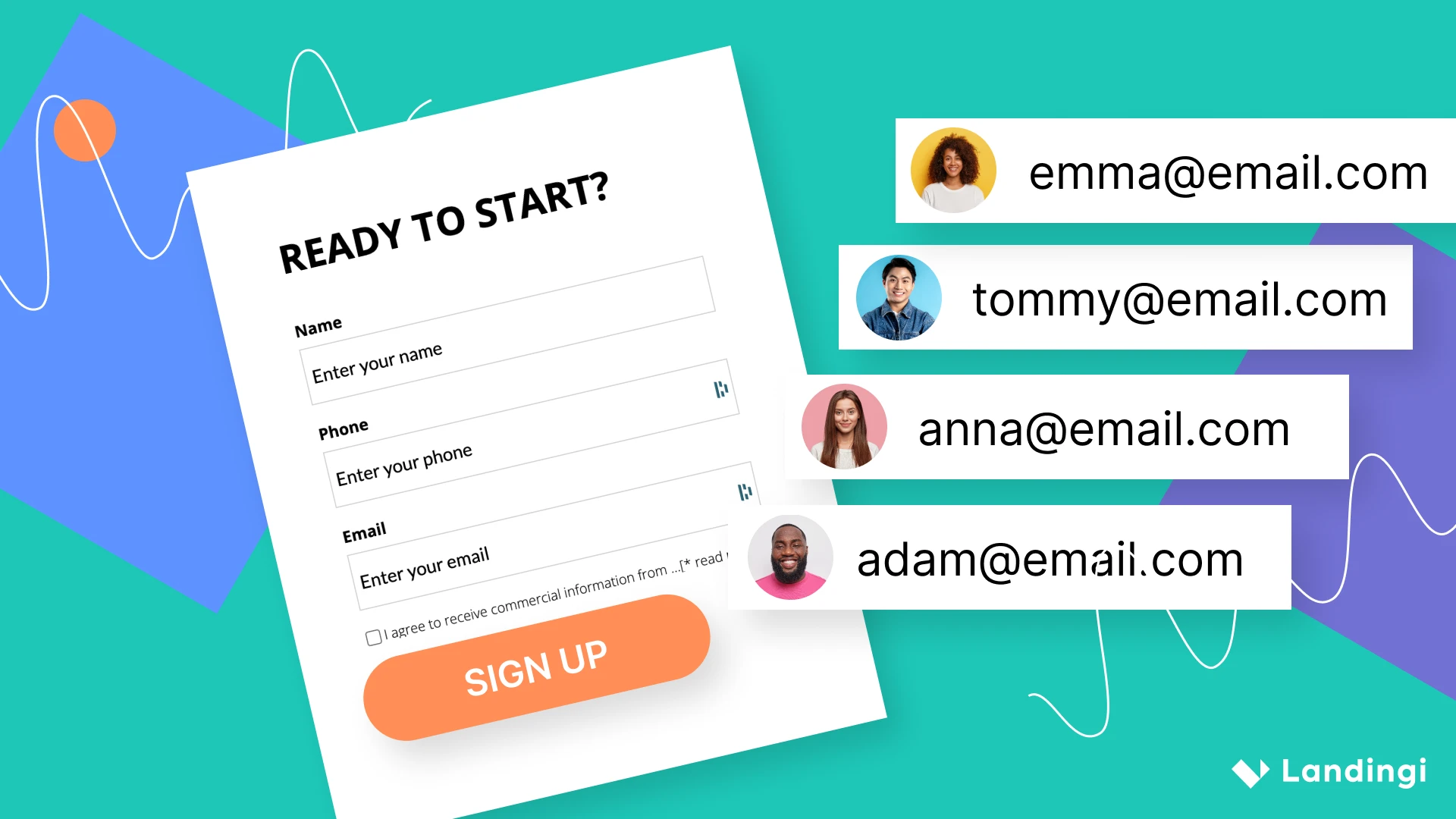We often start landing page optimization process without some appropriate knowledge or relying on untrusted sources found on the Internet. In this post, I am going to show you three most popular ideas about landing page optimization that you may see here and there, claimed by many, but in reality, such ideas could destroy your business.
From this article you’ll find out:
- Why you shouldn’t rely on case studies found over the Internet
- What is statistical significance
- How to prepare for a landing page optimization
Changing color of a CTA button?
I guess that you must have read once or twice that white color means safety, blue – calm, red encourages to take some action, orange means happiness. Or maybe you’ve seen some catchy headlines saying that “thanks to the change of the CTA button color we increased our conversion by 167%? In 99 out of 100 cases it won’t be relevant. You may lose your time, reading about interpretation and meaning of each and every color, or about some simple tricks to boost your conversion rate. Don’t do that for your website. Some changes may not bring a single result, and to make a competitive advantage you need more than changing the color. At the end of the day, it doesn’t matter that your CTA was red and your competitors decided on brown or blue.
Fewer fields in a form?
It can be one of the very first ideas that came to your mind if you ever thought about boosting your conversion. You can find numerous articles and social media posts that glorify limiting fields in any forms and tell you that such a change can increase conversion. Well, that change could actually increase the number of fulfilled forms, but would it reflect in any other results and help your business?
Imagine a situation below:
You are a marketer at XYZ, and your main goal is to generate leads and pass them further to sales reps who are responsible for orders of your company products – floor panels. Your landing page offers the possibility of downloading a catalog full of photoshoots of your products and some advice about assembling floor panels. As you read a lot about reducing fields in forms, you decide to modify your current form. Voila, your conversion rate grows.

Such a simple change, but thanks to it you achieved a conversion rate growth by 20%. Instead of 100 leads, you deliver 120 leads to sales representatives. However, despite the fact that more forms have been filled out, the sales fell threefold. While reducing some fields from forms, such as phone number, you removed the key information for sales reps what reflected in low efficiency of your sales department.

Remember! Reducing some fields ensure yourself that it won’t affect the quality of leads. Not every quantitative change will allow you to achieve qualitative growth.
A/B testing!

“Do A/B test and check our which website delivers better results” – this is a common comment you can find on social media. There are so many myths about A/B testing that it takes ages to debunk some of them. Many people think that A/B testing is a solution for conversion rate growth. The idea is simple like A, B, C: run the test and see what works better. However, we may forget about a statistical significance.
What is a statistical significance?
Let’s show it in the example:
You asked your workmates which version of your project is better: A or B. In a first room, the score is 3:1 for A. So you should choose A, right? Can you get some trusted results from such a small sample? Not really. You can get some answers from other people, and they can change the score – let’s take 10 people who vote for B, then the score looks like 3:11. Ok, so could you now choose what is better? Still not.
As you noticed, along with the growth of answers, the tables can turn. However, the more people you ask, the answer will get aligned, and the risk of making a mistake will be smaller.
Statistical significance is a probability measurement that statistics – managed test – reflects reality and you can make some conclusions based on its results. Understanding this concept is crucial for successful A/B testing and making conclusions.
Remember! For every research you conduct the size of a test sample will be different, as it depends on many factors. To find out if your A/B testing was managed in a right war, according to a statistical perspective, you can use A/B Significance Test by Kissmetrics.
As you can see, you can’t really count on each and every idea found on the Internet. It’s not the author’s fault or malice. Some ideas can be great, but not for our business or industry. How can you optimize your landing pages in a right way, anyway?
To get you prepared for optimization of landing pages, I prepared a simple outline that can show you where to start and how to manage your optimizing activities to make your business benefit from it the most.
5 steps to landing page optimization
Before you start you need to know that optimization is a constant process. It is not a thing you plan one day to finish the next one. The scheme you can see, you can apply to any website – not only to your landing page.
- Quantitative and qualitative analysis
To make a quantitative analysis you need some analytical tools (for instance: Google Analytics). Gather some data that will be helpful for identifying the most valuable traffic sources. Even a simple analyzing of traffic sources can help you select keywords or trends that help to increase your conversion rate. Next step is a qualitative analysis – and to make it right, you can use heatmaps, click and scroll maps or eye-tracking research. You have almost unlimited possibilities. Remember, that the knowledge of what attracts your user is vital for testing out some new elements on your page. - Determining hypothesis
Knowing some potential problems that your users encounter on your website you need to think about the solution to solve them out and therefore make your conversion rate growth. This is the perfect moment for determining hypothesis you want to test out. It can look like “if X then Y”, where X is a change and Y is the desired effect. Examples?“If I change the colour for red, more people will click on it as it will be highlighted on the landing page” or “If I get rid of some keyword that doesn’t deliver results, but I’ll focus on the best ones, I will reach some aware customers or potential customers interested in purchasing my product”. If you can’t explain your actions, then maybe it’s worth reconsidering. - Preparing a test
With a hypothesis ready-to-go, you can get to the point where you create some variants of pages you want to test out or prepare appropriate traffic sources. You can make A/B testing easier with some tools: you can test some variants in landing page editor (Landingi) or with OmniConvert or Optimizely. - Conducting a test
In this stage, your knowledge about statistical significance will be priceless. Use some calculators (Optimizely, VWO) to find out how many people should see each test variant of your landing page – the given number will be correct from the statistical point of view. Remember to manage your test for a specific, relevant period of time. Don’t stop your test even if you notice some growth of conversion rate in one of the tested variants. - Conclusion
When your A/B testing came to an end, you can make some first conclusions. A/B testing often finishes with no clear solution – but you shouldn’t be put off by this. The problem you noticed very often is spot on but needs a different way to be solved. One test or analysis may be a starting point for further analyzing. Conversion rate optimization is a process that needs to be repeated on a regular basis… unless you don’t want to get some satisfying results.
You need to remember that higher conversion rate doesn’t really mean higher sales volume. In terms of optimization, you need to focus on making changes that will directly impact your business and make it more profitable. Take into account that conversion rate optimization doesn’t require changes only within the website, but also selecting some appropriate sources of traffic and a good match between an advert and a landing page. Your target group and their behavior is the key to success. If you take that into consideration and same time manage some thoughtful activities, you are to achieve some satisfying results.





